 W
WA 250 Years Old Person is a book by Ali Khamenei, supreme leader of Islamic Republic of Iran. It is a collection of his lectures on the political combats and struggles of Shia Imams. This book consists of 17 chapters.
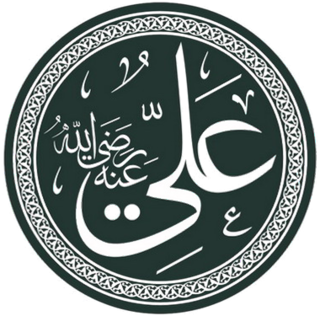 W
WAl Ghadir is a 20-volume book written by the Iranian Shia scholar Abd Al Husayn Amini.
 W
WAlef-Laam Khomeini is a book written by Hedayatollah Behboudi, which is regarding the biography of Iran's 1st/former supreme leader, Seyyed Ruhollah Khomeini. This book was published by the institute of "Motale'at wa Pazhuheshhaye Siasi" in 2018; and has obtained Jalal Al-e Ahmad Literary Award, and also Iran's Book of the Year Awards.
 W
WAmid dictionary is a two volume dictionary of Persian language, written by Hasan Amid.
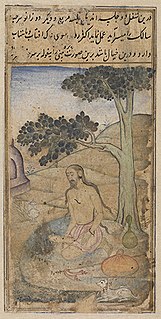 W
WThe Bahr al-Hayāt or Ocean of Life is an illustrated Persian book, published c. 1602 by Muhammad Ghawth, which covers topics including yoga asanas used for meditation. It is probably the first illustrated textbook of yoga.
 W
WThe Bustan is a book of poetry by the Persian poet Saadi, completed in 1257 CE and dedicated to the Salghurid Atabeg Sa'd I or Sa'd II. Bustan is considered one of two major works of Saadi.
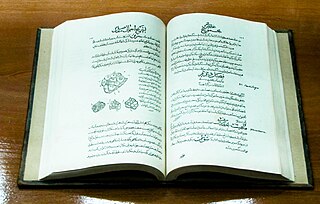 W
WThe Canon of Medicine is an encyclopedia of medicine in five books compiled by Persian Muslim physician-philosopher Avicenna and completed in 1025. It presents an overview of the contemporary medical knowledge of the Islamic world, which had been influenced by earlier traditions including Greco-Roman medicine, Persian medicine, Chinese medicine and Indian medicine.
 W
WThe Culture of Nakedness and the Nakedness of Culture is a book by Gholam-Ali Haddad-Adel, an Iranian scholar and intellectual, criticizing Western culture. The book focuses on the issue of women's rights and the hijab, and argues that Western clothing differs from that of Eastern societies due to the differences in their viewpoints on humankind. It also explains how Japanese clothing became Westernized.
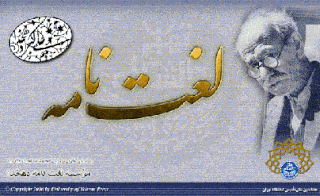 W
WThe Dehkhoda Dictionary is the largest comprehensive Persian encyclopedic dictionary ever published, comprising 200 volumes. It is published by the Tehran University Press (UTP) under the supervision of the Dehkhoda Dictionary Institute. It was first published in 1931. It traces the historical development of the Persian language, providing a comprehensive resource to scholars and academic researchers, as well as describing usage in its many variations throughout the world.
 W
WDīvān-e Kabīr or Dīvān-e Šams-e Tabrīzī (The Works of Šams Tabrīzī) or Dīvān-e Šams is one of Mawlānā Jalāl-ad-Dīn Muhammad Balkhī's (Rumi) masterpieces. A collection of lyric poems that contains more than 40,000 verses, it is written in the Persian language and is considered one of the greatest works of Persian literature.
 W
WThe Encyclopedia Islamica is an encyclopedia on Islamic and Iranian studies published by Brill, comprising a projected 16-volume translation of selected articles from the new Persian Dā'erat-ol-Ma'āref-e Bozorg-e Eslāmi, supplemented by additional articles written in English by scholars affiliated with the Institute of Ismaili Studies.
 W
WFatemeh is Fatemeh is a book written by Ali Shariati. In the book, Fatima Zahra the daughter of the Islamic prophet Muhammad is described as a role model for Muslim women around the world and a woman who is freedom. It was written in the pre-revolutionary era of Iran's history where there were no specific sources by which one might interpret who she was, and he assures the readers that he is giving them more than an analytical description of her personality and that it needs the criticism of the enlightened thinker. By writing this book he was to complete the work of French scholar Professor Louis Massignon.
 W
WThe Fihi Ma Fihi, "It Is What It Is" or "In It What Is in It") is a Persian prose work of a famous 13th century writer, Rumi. The book has 72 short discourses.
 W
WForty Hadith is a 1940 book written by Ruhollah Khomeini, the founder of the Islamic Republic of Iran. It describes his personal interpretations of forty traditions attributed to Muhammad, the Prophet of Islam, and The Twelve Imams.
 W
WFour main books of Biographical-Evaluation (Book), is a book, written by Seyyed Ali Khamenei ; which is concerning a general view on Biographical evaluation, that is among the (Islamic) specialized sciences.
 W
WGhena (book), also known as "the book of Ghina' and Moosiqi (music)" is a Persian Feqhi book which has been written by Iran's supreme leader, Seyyed Ali Khamenei. This religious book which is also known as "Darsnameh Ghina'-and-Moosiqi", includes the text of 76 sessions from the Fiqh sessions of haram (illegal) gains of Seyyed Ali Khamenei in regards to the subject of Ghina' and music.
 W
WGood Night Commander! is a picture book written by Ahmad Akbarpour in Persian in 2003 and illustrated by Narges Mohammadi. The book is mainly about the Iran-Iraq war. The book focuses on the experiences of a young boy who calls himself the Commander and has lost one of his legs and his mother during the war.
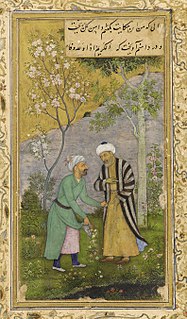 W
WThe Golestan is a landmark of Persian literature, perhaps its single most influential work of prose. Written in 1258 CE, it is one of two major works of the Persian poet Sa'di, considered one of the greatest medieval Persian poets. It is also one of his most popular books, and has proved deeply influential in the West as well as the East. The Golestan is a collection of poems and stories, just as a flower-garden is a collection of flowers. It is widely quoted as a source of wisdom. The well-known aphorism still frequently repeated in the western world, about being sad because one has no shoes until one meets the man who has no feet "whereupon I thanked Providence for its bounty to myself" is from the Golestan.
 W
WHidayat al-Mutaʽallemin fi al-Ṭibb is a medical guide written in Persian. The author is Abu Bakr Rabee Ibn Ahmad Al-Akhawyni Bokhari.
 W
WThe Irania Encyclopedia is a reference book for the culture and civilization of the Persian and Iranian Plateau. The encyclopedia has 5,000 entries and 500 photos, and it was written by Reza Moradi Ghiasabadi.
 W
WJahangusha-i Naderi, is a book on the reign and wars of Nader Shah, written by Mirza Mehdi Khan Astarabadi, Nader's official historian. Jahangusha-i Naderi is the most important book on the history of Iran during Nader's rule. The author of the book was a companion of Nader and he saw many of the events with his own eyes.
 W
WJourney to Heading 270 Degrees is a novel by Ahmad Dehqan. The novel is set during the Iran–Iraq War and focuses on the experiences of a high school student who participates in several operations named Naser. Over 15,000 copies were published in Iran.
 W
WKashf al-Asrar is a book written in 1943 by Ruhollah Khomeini, the founder of the Islamic Republic of Iran, to respond to the questions and criticisms raised in a 1943 pamphlet titled The Thousand-Year Secrets by Ali Akbar Hakimzadeh, who had abandoned clerical studies at Qom seminary and in the mid-1930s published a modernist journal titled Humayun that advocated reformation in Islam. Kashf al-Asrar is the first book that expresses Khomeini's political views.
 W
WKelidar is a novel by Mahmoud Dowlatabadi. The novel consists of ten books in five volumes. The book was written in 15 years, and includes Iranian Folklore themes. Kelidar has been translated into different languages. Kelidar refers to the name of a mountain and a village in Khorasan, where the events of the novel take place.
 W
WAbū Manṣūr al-Thaʿālibī, Abd al-Mālik ibn Muḥammad ibn Ismā’īl, (961–1038), was a writer of Persian or Arab ethnicity, native of Nishapur, Persia, famous for his anthologies and collections of epigrams. As a writer of prose and verse in his own right, distinction between his and the work of others is sometimes lacking, as was the practice of writers of the time.
 W
WThe leopards who have run with me is a Persian language short story collection written by Iranian writer Bijan Najdi. The book was published in Iran in 1997.
 W
WLipstick Jihad: A Memoir of Growing Up Iranian in America and American in Iran (ISBN 1-58648-193-2) is Iranian-American writer Azadeh Moaveni's first book, published on February 4, 2005.
 W
WThe Marionettes (1963) is a puppetry play by Bahram Beyzai, and one of the most important plays of the Persian language. It has been staged numerous times in various languages around the world. Together with two subsequent plays, namely Evening in a Strange Land (1963) and The Story of the Hidden Moon (1963), The Marionettes constitutes the playwright's puppet trilogy.
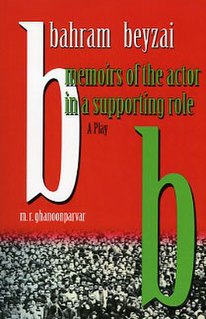 W
WMemoirs of the Actor in a Supporting Role is a 1982 play by Bahram Beyzai.
 W
WMokalemate Moqim va Mosafer is a political treatise by Noorollah Najafi Isfahani. The treatise was published in Isfahan in July 1909. This treatise was written in the years between the first and the second Persian Constitutional Revolution. In this treatise, the author presents an Islamic version of the constitutional political system. The treatise Moqim va Mosafer, which was written in constitutional history, took a prominent place in its political treatises and explored the concept of constitutional jurisprudence with the idea of a "powerful government". The treatise Moqim va Mosafer proved by the powerful principle that injustice of the constitutional state are less than monarchy and almost controllable; yet it believes that if the constitution leads to mass despotism, there will be a great deal of tyranny that cannot be easily reformed.
 W
WName-ye Khosrowan is a historical book written by the Qajar prince, Jalal al-Din Mirza Qajar between 1868 and 1872 CE. Name-ye Khosrowan includes history of Iran, from the ancient times to the Zand dynasty.
 W
WNational Security and Nuclear Diplomacy is the memoir of Hassan Rouhani, the first secretary of Iran's Supreme National Security Council who was also in charge of Iran's nuclear case under President Mohammad Khatami as tensions began to escalate over Iran's nuclear program. About two years after this book was first published in 2011, its author was elected as President of Iran on 15 June 2013. In this book, he has focused on Iran's nuclear program and challenges created by the Western countries, especially the United States and three European countries of France, Germany and United Kingdom, during 678 days when he and his team were handling Iran's nuclear case. The history of Iran's nuclear technology and the process of achieving complete nuclear fuel cycle are major topics of the book.
 W
WNoureddin, Son of Iran is the memoirs of Sayyid Noureddin Afi from the 80 months of his participation in the Iran–Iraq war. Noureddin, Son of Iran led to Afi's reputation in Iran after it was published by Sureye Mehr Publication in 2011. In 1994, Mousa Ghayour recorded the memoirs of Noureddin Afi in Turkish and it was presented as a written book by Masoume Sepehri years later. َThis book consisted of 18 chapters along with photographs. The narrator mentions a dream as the reason of producing this war memoir. Noureddin, Son of Iran received an honorable mention in the "Memoir" category of the Jalal Al-e Ahmad Literary Awards (2012).
 W
WAn Outline of Islamic Thought in the Quran is the name of a book/work of Iran's supreme leader, Seyyed Ali Khamenei which was published before Islamic revolution ; and is a collection of (Khamenei's) copies, of his daily meetings (lectures) --at Imam Hassan Mosque in 1974-- plus an introduction which was written by him before the publication of the book.
 W
WPalestine from the Perspective of Ayatollah Khamenei is a 2011 book excerpting many statements of Iranian Supreme Leader Ayatollah Ali Khamenei about Palestine and Israel. The book and consists of 8 chapters and 416 pages. It is currently available in Iran only, while an Arabic translation is promised.
 W
WThe Persian Encyclopedia is one of the most comprehensive and authoritative Encyclopedias written in Persian. It is a two-volume encyclopedia published as three physical volumes.
 W
WPersian Inscriptions on Indian Monuments is a book written in Persian by Dr Ali Asghar Hekmat E Shirazi and published in 1956 and 1958 and 2013. new edition contains the Persian texts of more than 200 epigraphical inscriptions found on historical monuments in India, many of which are currently listed as national heritage sites or registered as UNESCO world heritage, published in Persian; an English edition is also being printed.
 W
W"Persian manuscript in Japan" in Persian :دستخط پارسی ژاپن also called Nanban), is a Persian inscription from 1217 AD that was written by a Persian in Quanzhou of China for a Japanese monk named Keisei, a poem of Shahname Ferdusi. It is designated as a national important cultural property (artwork) in Japan. It is the oldest existing Persian document in Japan.
 W
WThe Persian Sphinx: Amir Abbas Hoveyda and the Riddle of the Iranian Revolution is a political historical biography of Amir Abbas Hoveyda by Iranian-American historian and author Abbas Milani. The book covers his early life, rise in politics and 12 year tenure as the longest serving prime minister of Iran from 1965 to 1977 during the reign of Shah Mohammad Reza Pahlavi until his trial and execution in the aftermath of the Iranian revolution in 1979.
 W
WRuhe-Tawhid, Nafye Obudiate GheireKhoda is the name of a book/article from Iran’s supreme leader, Seyyed Ali Khamenei, which was published in 1977 for the first time. This book was provided by him in response to a student's question and likewise to a query which was asked: “What is the practical role of believing in Tawhid, in the human life?”.
 W
WThe Shahnameh is a long epic poem written by the Persian poet Ferdowsi between c. 977 and 1010 CE and is the national epic of Greater Iran. Consisting of some 50,000 "distichs" or couplets, the Shahnameh is one of the world's longest epic poems. It tells mainly the mythical and to some extent the historical past of the Persian Empire from the creation of the world until the Muslim conquest in the seventh century. Iran, Azerbaijan, Afghanistan and the greater region influenced by Persian culture such as Georgia, Armenia, Turkey and Dagestan celebrate this national epic.
 W
WSharh-e Esm is the biography of the supreme leader of Iran, Ali Khamenei. The book is written by Hedayatollah Behboudi, and has been translated in some other languages. It was published by the institute of Motaale’at wa Pazjuheshhayeh Siyasi.
 W
WA Study on Iranian Theatre (1965) is Bahram Beyzai's seminal research on theater in the Persian world from the ancient times to the twentieth century. It has been described as "the definitive work on the history of Persian theatre."
 W
WSullam al-sama', also known as Resaleh-ye Kamaliyyeh, meaning "The Ladder of the Sky" or "The Stairway of Heaven", is an astronomical treatise written by the Persian mathematician and astronomer Jamshid Kashani in 1407 about the determination of the distance and size of heavenly bodies such as the Earth, the Moon and the Sun.
 W
WTwo Centuries of Silence is a book written in Persian by Abdolhossein Zarrinkoub, a prominent Iranian scholar of Iran's culture, history and literature. The work is a historical account of the events and circumstances of the first two centuries of the Iranian history following the Arab conquest of Iran in the 7th century AD until the rise of the Tahirid Dynasty, a Muslim dynasty of native Iranian origin.
 W
WThe Zafarnama, which translates to "Book of Victories," is a panegyric book written by Sharif al-Din ‘Ali Yazdi approximately two decades after the death of its main subject, Timur, the Turco-Mongol Persianate conqueror. It was commissioned by Ibrahim Sultan, Timur's grandson between 1424–28, and remains one of the best-known sources of Timur's life. The text was written using the notes taken by royal scribes and secretaries of Timur, suggesting that the history of the book was based on a careful and desired selection of facts.
 W
WZakhireye Khwarazmshahi (Persian: ذخیرهٔ خوارزمشاهی Zakhīra-i Khwârazmshâhī, "Treasure dedicated to the king of Khwarazm"), is a Persian medical encyclopedia written by the Persian, Ismail Gorgani (1040-1136) in 1110.